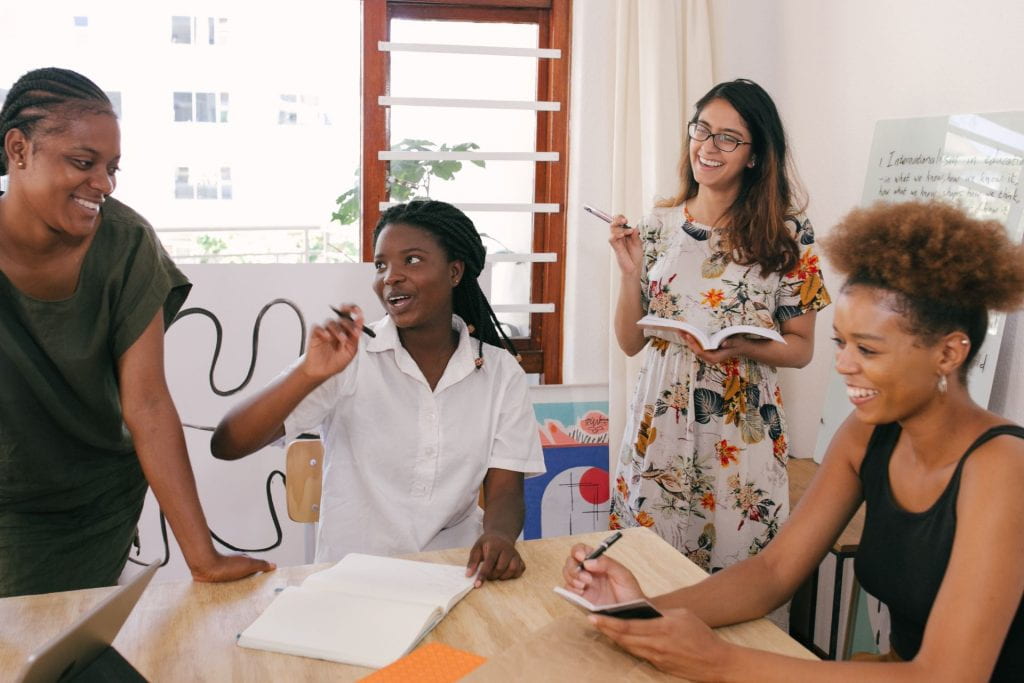
By Spencer Chalifour
Working as part of a team requires not just understanding yourself but the people you’re working with. The Effective Team Dynamics Initiative (ETDI) at Georgia Tech provides guidance on how to accomplish both these tasks. The guiding method ETDI uses for understanding team dynamics is the CliftonStrengths test. If you haven’t explored how Gallup CliftonStrengths can assist you, we provide more detail in our introduction to effective team dynamics.
CliftonStrengths is exceptionally beneficial for faculty and students, especially anyone new to teaching or working in teams at the college level. Tutors can also benefit from implementing CliftonStrengths in their sessions. In this article, we examine a few tutoring strategies rooted in ETDI’s implementation of the CliftonStrengths assessment for use in one-on-one tutoring, peer tutoring, and group tutoring.
Strategies and Activities for One-on-One Tutoring
Individual student tutoring can be incredibly rewarding, but it also comes with unique challenges. Unlike in the classroom, where instructors can get to know students over several weeks, tutors often must establish rapport within a few minutes. Tutors also don’t always get the opportunity to check back in with students to see their progress.
However, tutoring also comes with several benefits not seen in the classroom. Tutors can work one-on-one with students for more extended periods than is often possible for a classroom instructor. This closer working relationship allows tutors to understand the needs of individual students better and customize their approach to fit each student’s particular way of approaching an assignment.
With these challenges and opportunities in mind, here are some potential activities tutors can implement to approach one-on-one tutoring more effectively with CliftonStrengths.
Use a Card Game to Understand CliftonStrengths Themes
Tutors should understand not only their own top strengths according to the CliftonStrengths assessment but also how they implement these strengths in different situations. You can clarify how you use your strengths by identifying how you respond to different scenarios. Consider statements like:
- When I am interacting with faculty, I use _____ theme
- When I am motivating students, I use _____ theme
- When I am building relationships with others, I use _____ theme
Once you’ve determined how you implement your strengths, you will be better equipped to utilize them in everyday situations you face as a tutor.
One helpful activity for understanding and implementing the CliftonStrengths theme uses cards with different situations where you can apply themes, like the ones listed above. These cards are used by ETDI workshop leaders, so please feel free to contact us if you’d like to schedule a workshop where we can run this activity.
Customize Feedback to Student Strengths
If you’re working with a student who already knows their CliftonStrengths, such as a student who has gone through an ETDI first year seminar curriculum set, then you can use their top strengths to determine how you advise them. Say, for example, you’re tutoring a student concerned with academic success, and they have woo as one of their top strengths. You could recommend that the student use woo to assemble a study group. An ETDI workshop can allow you to practice providing strengths-based assistance to students.
Strategies and Activities for Peer Tutoring
While one-on-one tutoring has benefits, peer tutoring can also be implemented to help students assist each other. Because peer tutoring involves students working with other students, peer tutors can better understand what their mentees are going through. Also, students are sometimes more willing to open up to their peers than to instructors or older tutors. Here are some strategies for using CliftonStrengths in peer tutoring, whether you’re running a peer tutoring session or are a peer tutor yourself.
Use the Peer Feedback/Teamwork Reflection Guide
If students are already working in groups on a project, consider implementing a reflection activity after they have completed a task as a team. For instance, you could assign a discussion post or a preparatory task for a larger project, such as a proposal or brainstorming session. Have students fill out the peer feedback/teamwork reflection sheet, and ask them to reflect on their answers. Use this reflection time to have students build an action plan to work more effectively as a team in the future.
Use Peer Support Questions
Consider using this activity as an expansion of the above activity. You can also use it separately as a guide to facilitate peer support for a particular assignment or project. Have students answer questions together like:
- What are the goals of this assignment?
- What is your argument or purpose? How can you make the argument or purpose visible and persuasive?
- Who is the intended audience? How will the intended audience affect the choices you make?
Strategies and Activities for Group Tutoring
Because the CliftonStrengths assessment focuses on working in a team, consider how you can best assist students as a group in addition to helping individual students. When assisting a group of students, such as a team working collaboratively on a class project, consider the following strategies.
Develop a Team Action Plan
Teams work best when each member understands the needs of all other members. With this in mind, consider advising a team to fill out the team action plan handout. This handout allows team members to establish what they resent in a group and enables their peers to respond with specific solutions. Tutors can also adapt the team action plan activity for instructors by reviewing a student team’s action plan or providing an example handout to help groups get started.
Conduct a Diverse Perspectives Activity
Teams also work best when members’ diversity is recognized and integrated into group dynamics. Tutors can adapt the diversity of knowledge, experiences, and strengths activity for instructors by reviewing the diversity, self-awareness, and teamwork handout with groups of students working as a team. Consider guiding student groups on identifying and discussing what they know about each other first, and then help them create a team plan or contract based on their diverse strengths.
Contact ETDI for More Team Activities
These are just some of the many resources available to tutors through ETDI at Georgia Tech. To get in touch to learn more about how you can use CliftonStrengths to improve your tutoring or schedule a workshop where we can run practice sessions of some of these activities, as well as many others, please contact us here.




